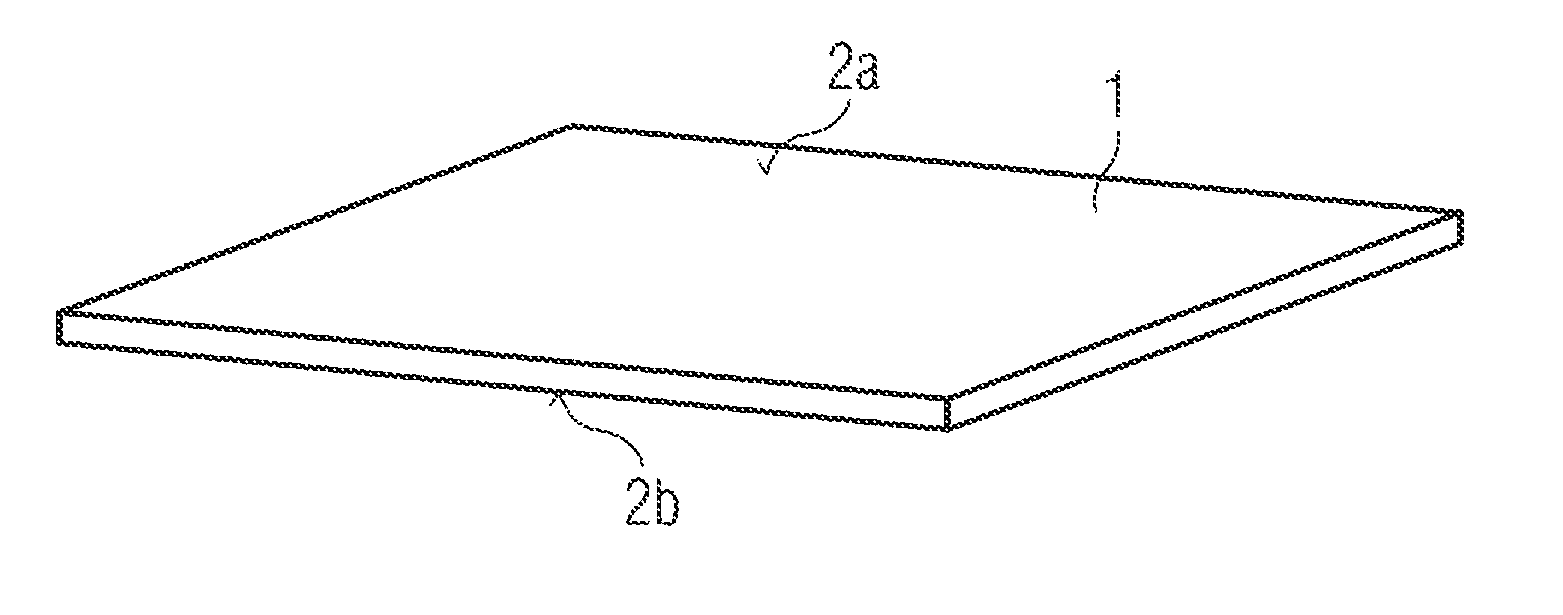Honeycomb structure made of a non-woven made of recycled carbon fibers
- Summary
- Abstract
- Description
- Claims
- Application Information
AI Technical Summary
Benefits of technology
Problems solved by technology
Method used
Image
Examples
Embodiment Construction
[0040]FIGS. 1a-1f show the production of a precursor from which it is possible to produce honeycomb structures of the invention made of carbon-fiber non-woven.
[0041]A first layer of carbon-fiber non-woven (1) is provided. A plurality of first, parallel-arranged beads (3) of adhesive are applied substantially with regular separations onto the upper side (2a) thereof The underside (2b) of the first layer of carbon-fiber non-woven remains free from the said beads of adhesive. For this, the rheology of the adhesive can be adjusted in such a way that, under the application conditions, no significant quantity of adhesive penetrates through the carbon-fiber non-woven and no adhesive is present on the underside of the first layer (1). The arrangement can have carbon-fiber paper on the underside of each layer in order that, under the application conditions, no significant quantity of adhesive penetrates through the carbon-fiber non-woven and no adhesive is present on the underside of the fir...
PUM
| Property | Measurement | Unit |
|---|---|---|
| Length | aaaaa | aaaaa |
| Mass | aaaaa | aaaaa |
| Structure | aaaaa | aaaaa |
Abstract
Description
Claims
Application Information
 Login to view more
Login to view more - R&D Engineer
- R&D Manager
- IP Professional
- Industry Leading Data Capabilities
- Powerful AI technology
- Patent DNA Extraction
Browse by: Latest US Patents, China's latest patents, Technical Efficacy Thesaurus, Application Domain, Technology Topic.
© 2024 PatSnap. All rights reserved.Legal|Privacy policy|Modern Slavery Act Transparency Statement|Sitemap



